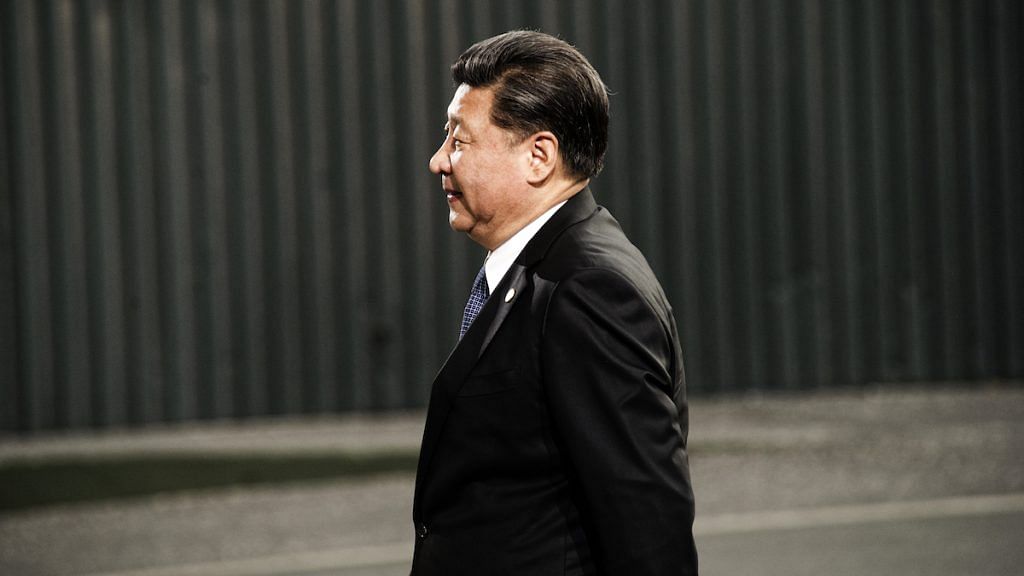Three days after Foreign Secretary Harsh Shringla returned from Kathmandu last week, where he sought to smoothen the spat caused by Nepal’s decision to incorporate Indian territories in a new map among other issues, Chinese defence minister Wei Fenghe flew into Kathmandu for a day-long visit to promote defence cooperation.
General Wei will travel to Bangladesh and Pakistan from Nepal. Meanwhile, next door in Bhutan, satellite imagery from Western and Indian sources revealed that the Chinese have built and populated a village – which they call Pangda – a couple of kilometres inside Bhutanese territory in the Doklam plateau area.
Predictably, Bhutan has rejected the alleged Chinese encroachment, but the truth seems far more complex. According to some, the Chinese had offered Thimphu a deal on settling the un-demarcated boundary between them as long back as the 1990s, but Bhutan did not accept the offer in deference to Indian sensitivities.
Also read: 5 maps that tell you all you want to know about India vs China in Ladakh
“Many know Bhutan was offered a ‘package deal’ from 90’s which is a swap for the Doklam area for bigger concessions in north central Bhutan by the Chinese but Bhutan declined it. Most don’t know it was rejected on grounds of Indian security interests at the Trijunction & ridge [sic],” tweeted Tenzing Lamsang, editor of The Bhutanese.
The Chinese renewed the offer just before the Doklam standoff in 2017 and, in fact, made it better, a Bhutanese political analyst told ThePrint, on condition of anonymity. It seems Beijing was willing to accept a narrower sliver of the Doklam plateau, but there was a catch in the proposal – it would have to include the tri-junction area the Chinese call Gyemochen, close to the Indian border and overlooking the narrow ‘chicken’s neck’ area connecting the northeast to the rest of India.
Again, in consideration of Indian security interests, Bhutan indicated it wasn’t interested. It has now come to light, an Asian diplomat told me, that during the 72-day standoff between Chinese and Indian troops on the Doklam plateau, the Chinese were building alternative routes to the ridge overlooking Indian territory.
For the moment, the Bhutanese say they aren’t overly concerned, but they know that by building and populating a village, the Chinese are sending them a message: If you don’t detach yourself from Indian concerns and settle the border in your own national interest, then incursions will keep happening.
Also read: India wants Bhutan to settle China border issue so it can define trijunction area near Doklam
China’s game plan
“The good old days are over. This is an entirely new playbook by the Chinese and we don’t know what the new rules are,” the Bhutanese political analyst said.
Actually, the character of the new playbook is slowly becoming clear. It is the disruption of the status quo all along China’s southern Himalayan periphery, and the Chinese are using every instrument in their arsenal to keep South Asia off balance.
In India, Beijing has forced 50,000 or so Indian troops to climb the heights and defend its frontier from another 50,000 or so Chinese troops in terribly inhospitable terrain through the coming winter in which temperatures could plunge to -30°C. In Bhutan, it is pushing the elected government to adopt a more independent foreign policy – an idea the Thimphu elite is beginning to warm to, as it looks for more options. And in Nepal, it is influencing domestic affairs through the Communist party brotherhood.
A fortnight before Wei Fenghe’s visit, when a power struggle inside the ruling Communist Party of Nepal began to get out of hand, two people intervened to resolve the matter – President Bidya Bhandari, who is said to be very close to PM K.P. Oli, and China’s ambassador to Nepal, Madam Hou Yanqi.
According to the Kathmandu Post, one day before a meeting of the party secretariat on 19 November, PM Oli and party colleague Pushpa Kamal Dahal, or Prachanda, began to scrap badly, with Prachanda accusing Oli of several inexcusable activities and demanding he resign. Oli threatened to postpone the party meeting.
So President Bhandari summoned Prachanda and Oli separately and tried to make them see sense; while Ambassador Hou met Oli. The party meeting was held. The spectre of a split was averted in the run-up to General Wei’s visit. Nepal’s Communist leaders presented him a united front.
In retrospect, it seems as if the three Indian visits to Nepal in the last month – by R&AW chief Samant Goel, Army chief M.M. Naravane and Foreign Secretary Shringla – are a mere interlude in Nepal’s fast-moving, increasingly Beijing-dominated politics. India, already tied down by its own military crisis with China, seems unable to offer real alternatives when Nepalis talk about Chinese encroachment reported in the north. According to the survey department of Nepal’s agriculture ministry, China had gobbled up 36 hectares of Nepali territory as far back as 2017.
Also read: Kalapani, controversial map, travel bubble discussed during Shringla’s maiden visit to Nepal
India must step up, again
As for Bhutan, India cannot expect Thimphu will be forever tied to its apron-strings, whether on the matter of security or economic interests, such as the sale of hydropower. Bhutan’s very respectful elite has begun to ask uncomfortable questions to their Indian interlocutors, as to why Bhutan cannot benefit, for example, from China’s Belt and Road Initiative (BRI).
Perhaps the only thing that will rescue India’s special engagement with these Himalayan nations is sustained political engagement by the highest levels in New Delhi. The Chinese see a leadership vacuum in India’s neighbourhood and have changed the rules in their exercise of power. India needs to change the rules back again.
Views are personal.
